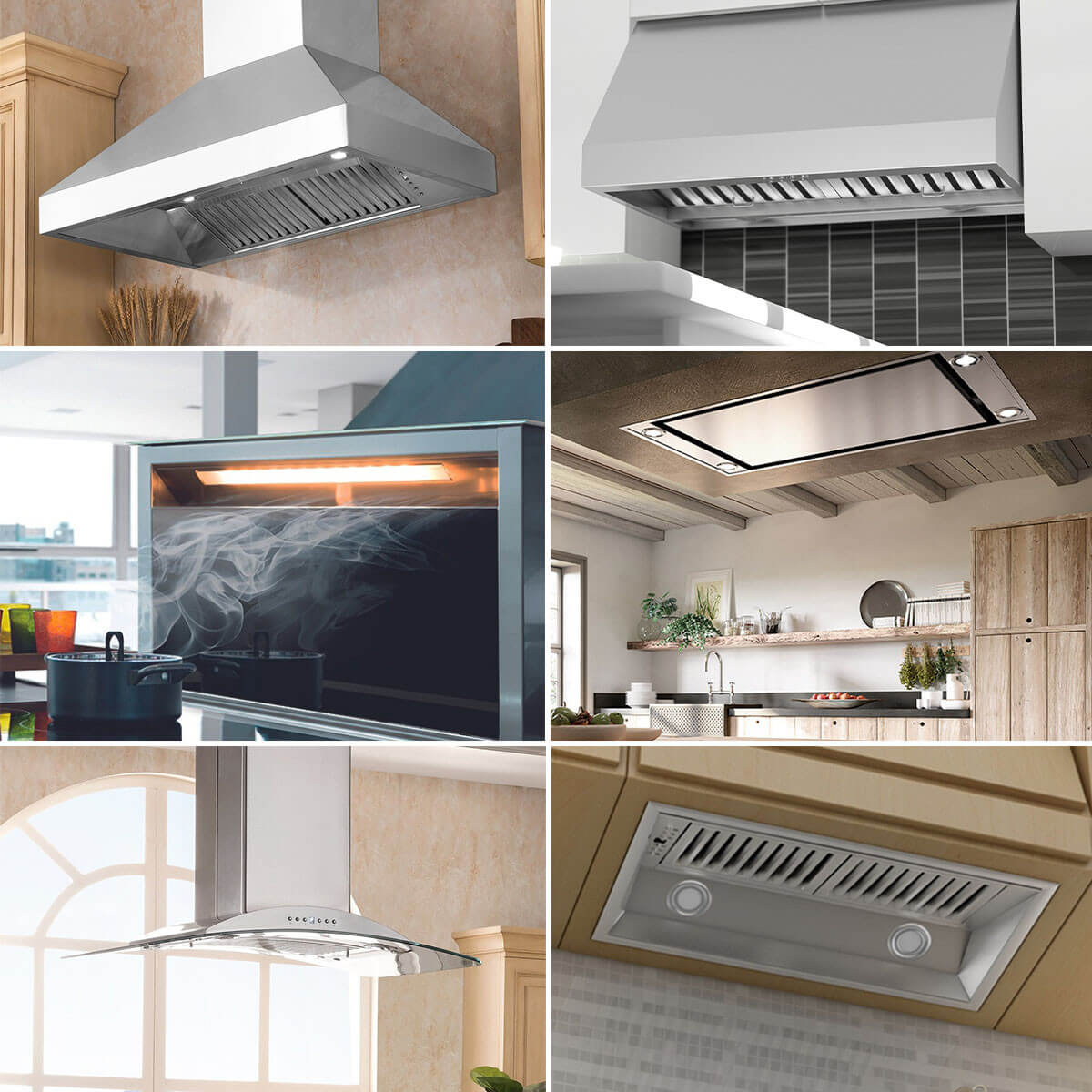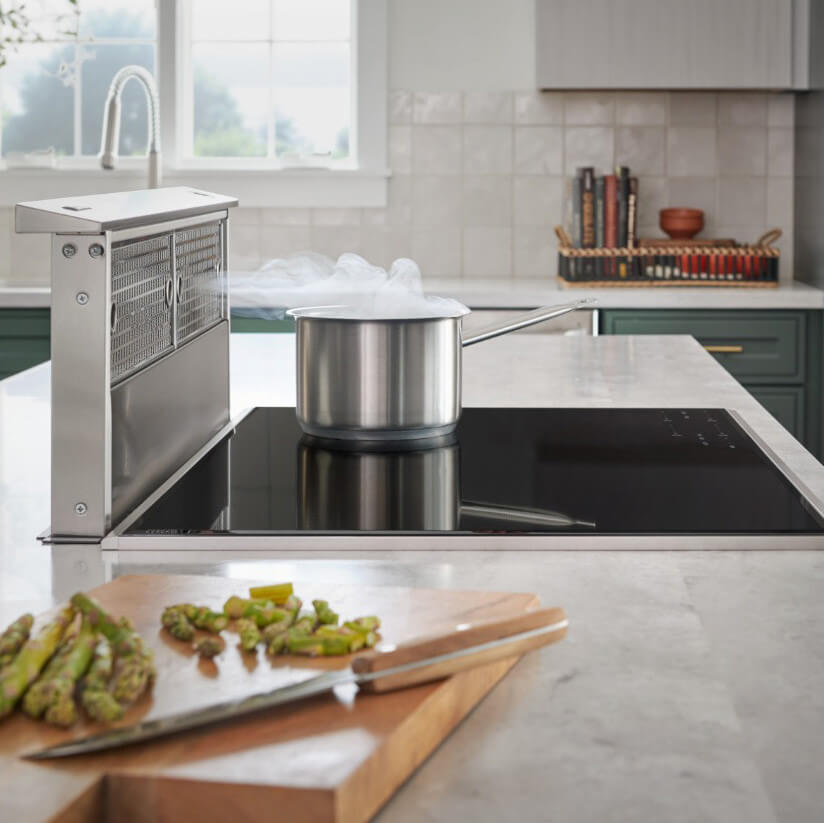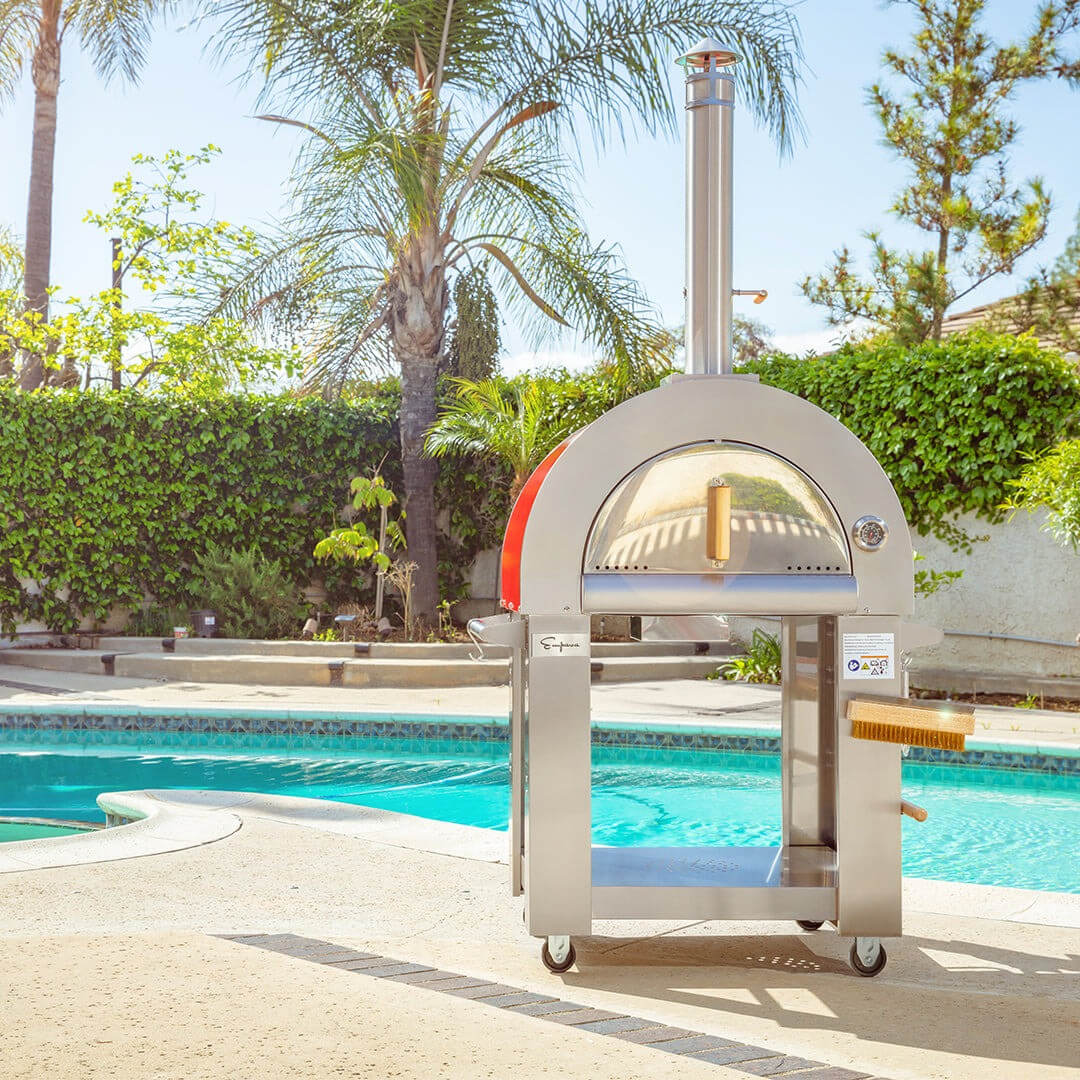Welcome back to the Rustic Kitchen and Bath blog, today we are discussing the essential aspects of range hoods to help guide you in choosing the perfect one for your kitchen. In this post, we will delve into the importance of range hoods, and CFM ratings, discuss the difference between ducted and ductless options, the various range hood mounts, and provide insights into finding the right height for your range hood. Whether you're a seasoned chef or a cooking enthusiast, this guide has been designed to assist you in making an informed decision about the ideal range hood for your kitchen.
What is a Range Hood?
Simply put, a range hood cleans the air in your kitchen while you cook. They are usually directly above your stove or cooktop to remove all the unwanted particulate matter in the air. Grease, fumes, smoke, heat, and steam are just some of the stuff that can pollute the air while cooking. By using a combination of air evacuation and filtration, range hoods remove unwanted particles and odors, leaving behind clean and fresh air.
What Does CFM Mean on a Range Hood?
CFM stands for “Cubic Feet per Minute” and is a crucial specification to consider when selecting a range hood. While it may sound complicated at first, CFM is simply a measurement of the airflow capacity of a range hood.
Most range hoods will have a CFM rating between 200 and 1200. The higher the CFM rating, the more air a range hood can handle. This means that range hoods with a high CFM rating are suitable for large kitchens and heavy-duty cooking, while range hoods with a low CFM rating are more appropriate for smaller kitchens and lighter cooking needs.
Determining what type of CFM rating you need is fairly easy. We here at Rustic Kitchen and Bath recommend calculating the total number of BTUs (British Thermal Units) your cooking surface has and then dividing that number by 100.
For example, the ZLINE RA30 has 4 burners with a total of 45,000 BTUs. This means that the ZLINE RA30 needs a range hood with a CFM rating of at least 450.
However, other factors such as the type of cooking (e.g., high-heat cooking methods), kitchen layout, and any additional ventilation systems should be taken into account.
Remember that it is better to have more CFMs than considered necessary than to have too few.

Ducted vs. Ductless Range Hoods
Another important factor to consider when looking for a range hood is if you require or would prefer ducting.
Ducted range hoods use a system of ductwork that connects the hood to an external vent or chimney to completely remove polluted air from the building. Ducted range hoods are generally considered more effective at removing pollutants from the kitchen since they directly vent them outside. They are particularly beneficial for kitchens that experience heavy cooking or produce substantial amounts of smoke and odors.
The alternative is ductless range hoods, also known as recirculating hoods. Ductless range hoods use specialized mesh or metal filters to capture grease, as well as filters with charcoal or carbon to remove odors and other microscopic contaminants from the air. Once the air is filtered, it is recirculated back into the kitchen. While they may not be as efficient as ducted range hoods in terms of removing pollutants, they are more flexible in terms of installation because they don't require ductwork. Ductless range hoods are commonly used in kitchens where duct installation is not feasible, necessary, or practical.

Choosing between a ducted and ductless range hood depends on the kitchen layout, what type of cooking you’ll be doing, the presence of existing ductwork, and personal preferences. Ducted range hoods are generally preferred when possible because they directly expel pollutants outside. However, ductless range hoods still offer effective filtration and recirculation of air, making them a great option in situations where duct installation is challenging.
What are the Different Types of Range Hood Mounts?
Range hoods come in multiple styles and can be mounted in a variety of different ways to accommodate virtually any kitchen layout and ventilation need.

Wall Mount Range Hoods
Wall mount range hoods are often seen in traditional kitchens when the cooking surface is positioned against a wall. Wall mount range hoods mount directly to the wall and are relatively easy to position and install. Wall mount hoods are frequently available in rustic finishes such as wood and copper.
Island Mount Range Hoods
Island mount range hoods are suspended from the ceiling directly above the cooking surface. Island mount hoods are designed for kitchens with cooking appliances positioned on an island. They can be more challenging to install but are frequently favored for their bold styling and the aesthetic appeal of the chimney.
Ceiling Mount Range Hoods
Ceiling mount range hoods are similar to island mount range hoods in that they are both mounted to the ceiling. However, ceiling mount range hoods lack a chimney and are generally flush against the rest of the ceiling, and require ducting. Ceiling mount range hoods provide a sleek, low-profile ventilation option.
Range Hood Inserts
Range hood inserts can be inserted into custom cabinets, enclosures, or ceiling cutouts to create a streamlined look in the kitchen. Range hood inserts are usually rudimentary and industrial in their design but are popular because their housing can be customized to match any design style.
Undercabinet Range Hoods
Undercabinet range hoods are designed to fit underneath a cabinet or shelf. They are similar to wall mount range hoods but don’t have a chimney which makes them ideal for kitchens with limited space or where clearance is a concern.
Downdraft Range Hoods
Downdraft range hoods are uniquely designed to fit into a countertop or behind the cooking surface. They are often much more complicated to mount and have limitations in terms of their efficiency compared to overhead hoods. However, downdraft hoods are a great alternative option when overhead ventilation is not possible or desired and provide a truly unique aesthetic.
Downdraft range hoods are uniquely designed to fit into a countertop or behind the cooking surface. They are often much more complicated to mount and have limitations in terms of their efficiency compared to overhead hoods. However, downdraft hoods are a great alternative option when overhead ventilation is not possible or desired and provide a truly unique aesthetic.

Each type of range hood serves a specific purpose based on the kitchen layout and design preferences. Choosing the appropriate type depends on the location of the cooking surface, available space, ventilation requirements, and aesthetic considerations.
Below, we’ve picked our favorite range hoods for each mount below to help you compare.
- Wall mount: ZLINE Convertible Vent Wall Mount Range Hood (KBCRN)
- Island mount: ZLINE Wooden Island Mount Range Hood (KBiTT)
- Ceiling mount: Forno Arezzo Ceiling Mounted Range Hood (FRHRE5312-44)
- Insert: Falmec Massimo Range Hood Insert (FIMA)
- Undercabinet: ZLINE Designer Series Under Cabinet Range Hood (8685C)
- Downdraft: Broan-NuTone RangeMaster Downdraft (RMDD3004)
Finding the Right Range Hood Height
At this point, you may be thinking that finding a range hood that meets your needs, and style preferences, and is the right height sounds difficult. Luckily, manufacturers make determining the right range hood height fairly simple by providing detailed guidelines.
For example, ZLINE outlines that their Convertible Vent Wall Mount Range Hood (KB) needs to be a minimum of 30 inches and a maximum of 36 inches above the cooking surface to ensure optimal performance. That leaves a window of 6 inches where comfort, aesthetics, and personal preference can be prioritized.

Range Hoods for Short Cielings
If your kitchen has a short ceiling, there are certain range hoods styles and mounts designed specifically for such spaces.
Undercabinet and insert range hoods are excellent options for short ceilings. Both can fit nicely into or below cabinetry or shelving which offers a streamlined look and a space-saving solution. Many undercabinet range hoods can be set up for recirculation if ducting is not an option due to the limited ceiling height.
Do I Need a Short Kit?
While undercabinet and insert range hoods may be generally better suited for short ceilings, wall mount and island mount range hoods can also be used in kitchens with short ceilings thanks to chimney short kits.
A chimney short kit is a replacement chimney kit with one or two adjustable pieces to allow range hoods with chimneys to be used in kitchens with short ceilings.
The ZLINE Convertible Island Mount Range Hood (BSKE2iN) is a popular choice for short ceilings and smaller kitchens because of its low-profile design. Through the use of the appropriate short kit (SK-BSKE2iN), the BSKE2iN can be mounted in kitchens with ceilings as low as 7 feet while still maintaining the recommended minimum and maximum distances to the cooking surface.

Range Hoods for High Cielings
For kitchens with high ceilings, there are a variety of range hood options available.
Both undercabinet and insert range hoods can be used just as effectively in kitchens with high ceilings because they can easily be vented out through the wall rather than the ceiling.
However, if you’re looking to make the most out of the additional vertical space, island and wall mount range hoods can add an attractive and striking aesthetic to a high-ceiling kitchen. The best range hood manufacturers pay just as much attention to the look and functionality of the chimney as they do to the hood itself.
For example, ZLINE incorporates crown molding and even wireless speakers into some of their chimneys. Other companies make cylindrical hoods that have no defined chimney, such as the Faber Cylindra Isola 15" Island Mount Range Hood.
Ceiling mount range hoods are also great options for kitchens with high ceilings. With adequate coverage and CFMs, hoods such as the Faber Stratus Isola can be mounted as high as 72 inches above the cooking surface.
Do I Need a Chimney Extension?
Just as they can be shortened with short kits, range hood chimneys can be lengthened with chimney extensions.
The ZLINE Convertible Vent Wall Mount Range Hood (KL3) can be used in kitchens with high ceilings up to 12 feet by using chimney extension 2PCEXT-KB/KL2/KL3-304 which extends the chimney up to 6 feet.

In Conclusion
We hope this guide has helped guide you through CFM ratings, the differences in ducted and ductless range hoods, and the different mounts. By considering these factors, you will have a solid foundation for choosing the right range hood.
Remember, a range hood is primarily there to help improve the air quality in your kitchen, but also adds an element of style and functionality to your cooking space. So go ahead, explore the options available, and select a range hood that suits your needs, complements your kitchen's design, and enhances your overall cooking experience. Thanks for reading!
If you would like additional help finding the right range hood, please feel free to call us at 1 (866) 212-9706 or book a consultation with one of our range hood experts!
Facebook: Rustic Kitchen and Bath
Instagram: @RusticKitchenandBath







